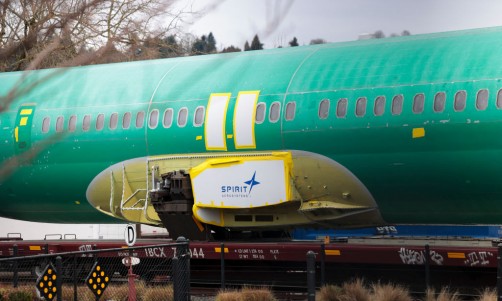An assessment of the Soyuz MS-22 spacecraft revealed a 0.8-millimeter-wide hole, which triggered a coolant leak outside the International Space Station (ISS) last week.
Because of this, the head of Russia's Roscosmos space agency announced on Monday that the Russian spacecraft had docked at the ISS.
Roscosmos Is Assessing The Vehicle Further
On Wednesday night, as two cosmonauts prepared to conduct a spacewalk outside the orbiting lab, the Soyuz's coolant began to leak.
With some assistance from its ISS partners, Russia's space agency Roscosmos has been working over the past few days to determine the origin and effects of the leak.
According to Space, the assistance includes a camera inspection of the Soyuz leak suspect area using the station's massive Canadarm2 robotic arm.
As per NASA's announcement on Monday, that survey, which was completed on Sunday, offered some helpful hints.
An examination of the Soyuz MS-22 spacecraft that experienced a coolant leak outside the International Space Station last week revealed a 0.8-millimeter-wide hole.
According to Roscosmos director Yury Borisov and the state-run TASS news agency, the hole is situated on the Soyuz service module's instrumentation compartment of the ship.
"Roscosmos is evaluating the imagery to determine if this hole could have resulted from micrometeoroid debris or if it is one of the pre-manufactured radiator vent holes," NASA announced.
Roscosmos will decide later this month whether the spacecraft is fit for flight, at which point Russia may decide to speed up the launch of a replacement spacecraft, Gizmodo writes.
Read More: Russian Cosmonauts' ISS Spacewalk Canceled Following Soyuz Coolant Leak
The Space Agencies Are Continuously Assessing The Spacecraft
Both NASA and Roscosmos have declared that neither the crew nor the space station in orbit are in any danger as a result of the incident.
The leak, which may have been brought on by a micrometeorite or a tiny piece of space junk, was discovered after a robotic arm inspection.
The damaged Soyuz spacecraft's status and future must be determined by December 27 according to the Russian space agency.
Two working groups will decide whether the spacecraft should be junked or allowed to carry passengers and land.
At the moment, only the Crew Dragon spacecraft from SpaceX and the Soyuz are currently used to transport astronauts to and from the ISS, Space says.
According to Reuters, the Soyuz MS-22 capsule is now in operational condition and temperatures have stabilized below 30 degrees Celsius (86 degrees Fahrenheit).
There is at least some good news, as Roscosmos flight controllers successfully tested the Soyuz MS-22's thrusters on Friday, according to NASA.
On December 21, NASA will proceed with a planned spacewalk to complete the installation of the International Space Station Roll-Out Solar Array (iROSA).
If the docked Soyuz MS-22 proves to be inoperable, Roscosmos has advanced plans to potentially launch a backup spacecraft to transport the cosmonauts back to Earth.
Previously, Russia has made plans to abandon the ISS to abandon one of the few areas of extensive cooperation between the US and Russia, and launch its own space station instead.
Related Article: NASA's InSight Lander Transmits Potential Final Image from Mars










